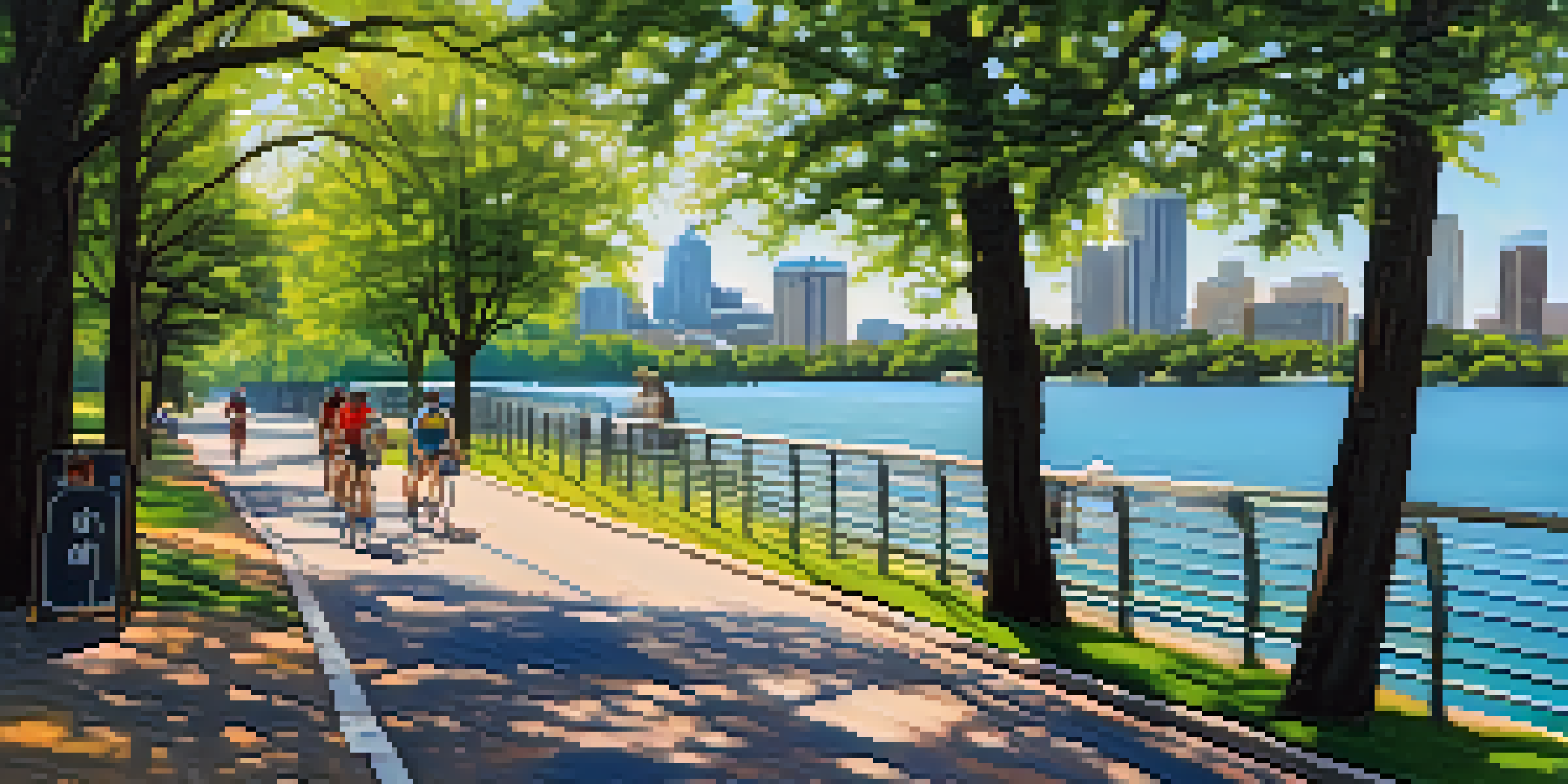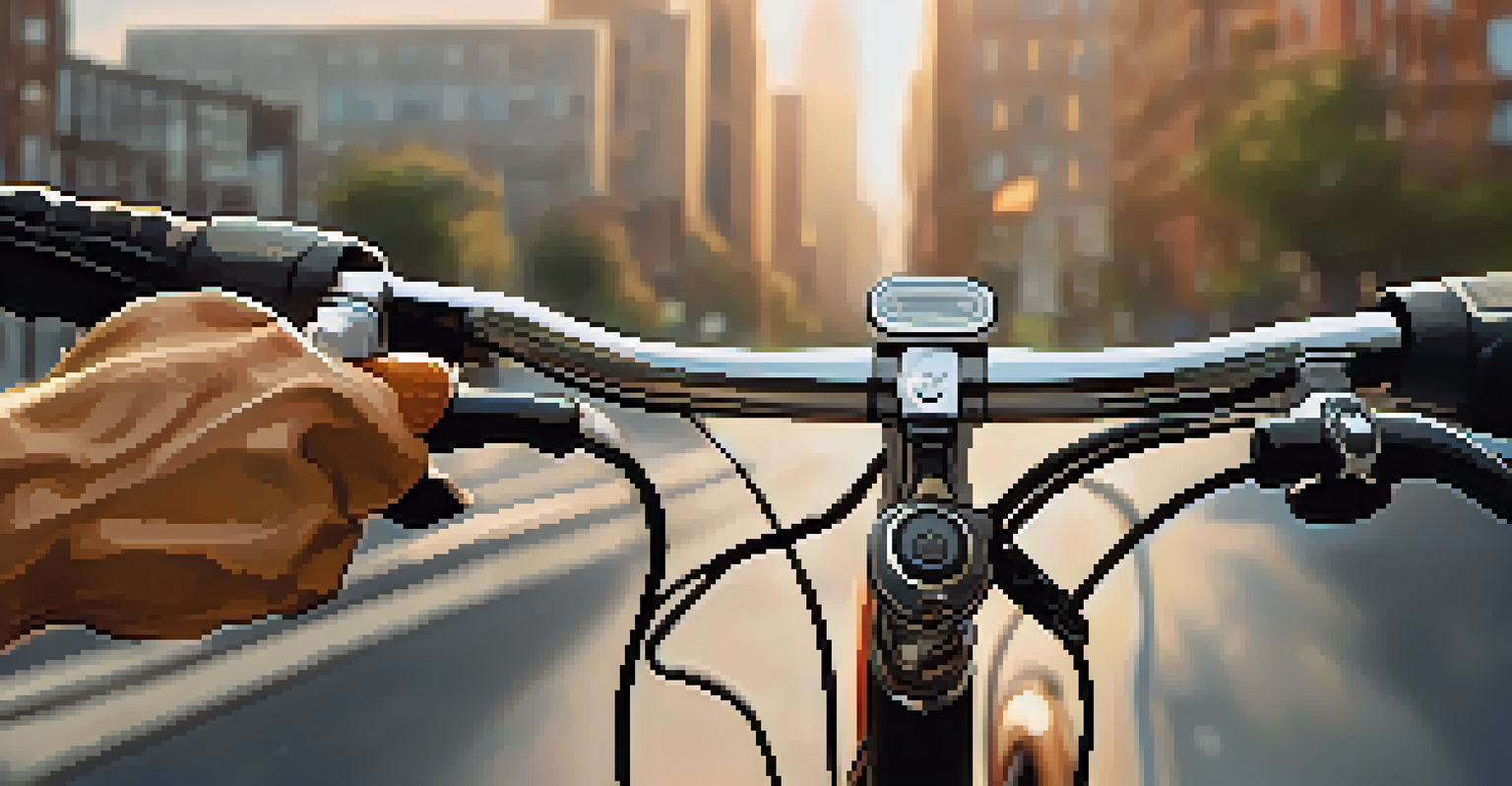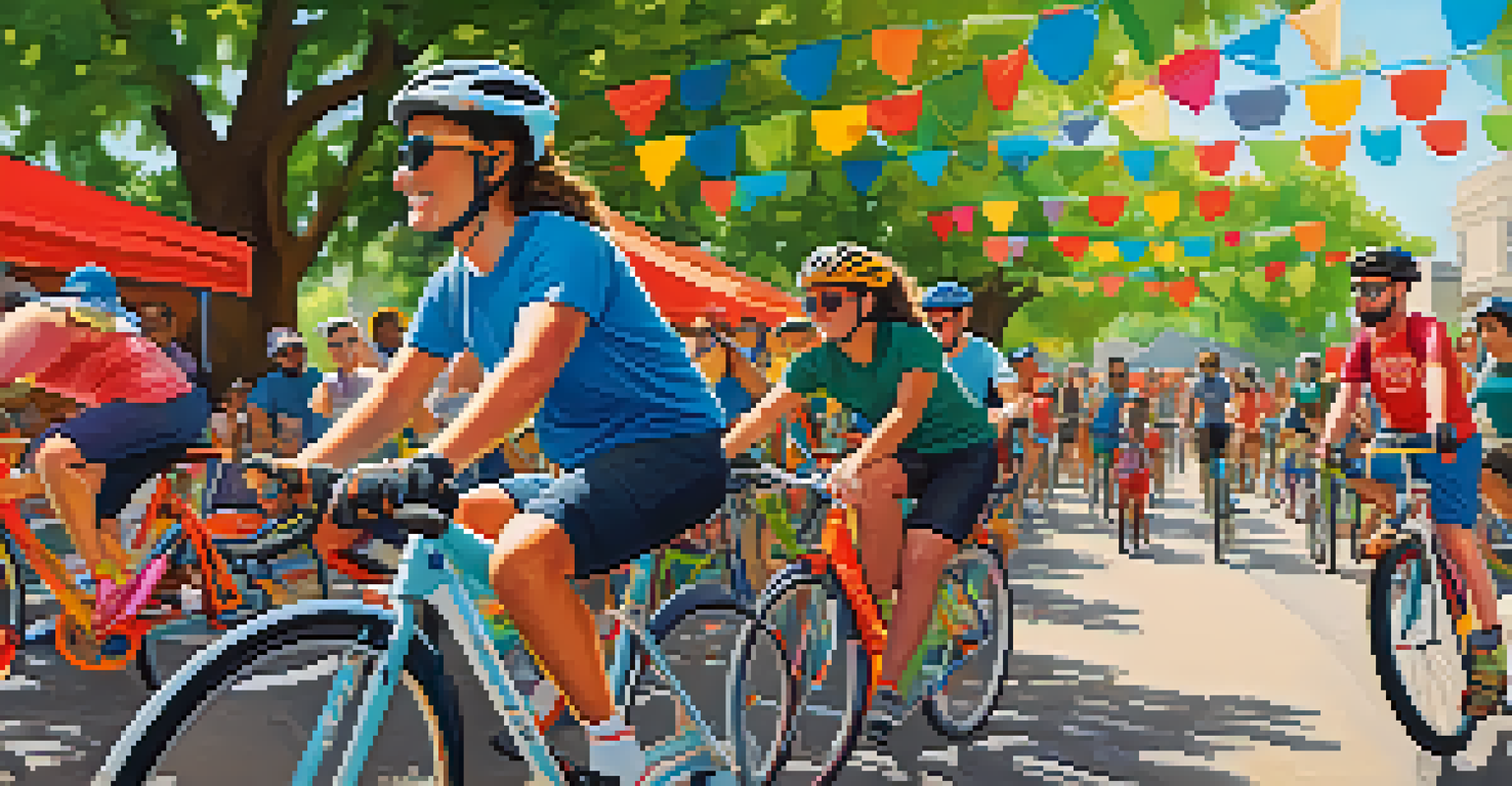Comparing Austin's Biking Culture to Other Major Cities

Austin's Unique Biking Landscape: A Local Perspective
Austin boasts a vibrant biking culture that reflects its local ethos. With over 200 miles of bike lanes and trails, the city encourages cycling not just as a mode of transport, but as a lifestyle. This commitment to biking is rooted in the community’s love for outdoor activities and sustainability.
Bicycling is a big part of the Austin lifestyle. It’s not just a way to get from point A to point B; it’s a way to connect with the city and its people.
What sets Austin apart is its mix of urban and natural landscapes. Riders can traverse bustling downtown streets or escape to serene trails along Lady Bird Lake. This diversity makes biking in Austin a unique experience, appealing to both casual cyclists and dedicated enthusiasts.
Moreover, the city's mild climate allows for year-round biking, which is a significant draw. While other cities may face harsh winters, Austin's pleasant temperatures mean that biking is a feasible option almost any day of the year.
Comparing Austin's Cycling Infrastructure to Other Cities
When comparing Austin to cities like Portland and San Francisco, the difference in cycling infrastructure becomes apparent. Portland, often hailed as the cycling capital of the U.S., has invested heavily in bike lanes and bike-friendly policies, making it a haven for cyclists.

San Francisco, with its hilly terrain, presents unique challenges for bikers. However, its extensive network of bike lanes and bike-share programs encourage residents to cycle despite the inclines. Austin, while improving, still has room for growth in terms of connectivity and safety.
Austin's Biking Culture Flourishes
Austin's vibrant biking scene thrives on a mix of urban and natural landscapes, supported by a strong community engagement and a commitment to sustainability.
Austin's bike infrastructure is evolving, with ongoing projects aimed at expanding bike lanes and improving safety. The challenge remains to keep pace with the increasing demand for cycling accessibility, especially as more people embrace biking as a viable commuting option.
Community Engagement: Austin vs. Other Cities
Austin's biking culture thrives not just on infrastructure but also on community support. Local organizations host events like Bike to Work Day and community rides, fostering a sense of camaraderie among cyclists. This grassroots involvement distinguishes Austin from other cities, where biking can sometimes feel more like an individual activity.
The bicycle is a curious vehicle. Its passenger is its engine.
In contrast, cities like New York have seen a surge in cycling due to city-led initiatives and campaigns. However, the sense of community can vary, with some cyclists feeling isolated amidst the urban sprawl. Austin’s smaller size and friendly atmosphere make it easier for bikers to connect and share their passion.
This strong sense of community can create a welcoming environment for newcomers. With regular meet-ups and social rides, Austin encourages people of all skill levels to join in, creating a more inclusive biking culture compared to other major cities.
Biking as a Lifestyle: Austin's Philosophy
In Austin, biking is more than just a means of transportation; it’s a lifestyle choice. Many residents embrace cycling as a way to reduce their carbon footprint and contribute to a healthier planet. This philosophy resonates with the city's overall values of sustainability and environmental consciousness.
Cities like Los Angeles, while promoting biking, often struggle with car-centric cultures that overshadow cycling. In contrast, Austin’s local businesses support biking through bike-friendly policies and infrastructure, such as bike racks and repair stations, making it easier for cyclists to integrate biking into their daily lives.
Infrastructure Needs Improvement
While Austin's biking infrastructure is evolving, it still faces challenges in connectivity and safety compared to other cities like Portland and San Francisco.
The city's commitment to promoting biking events, like the annual Austin Biker Rally, further solidifies this lifestyle. Such events celebrate biking and bring together enthusiasts, encouraging more people to adopt cycling as a regular activity.
The Role of Technology in Austin's Biking Scene
Technology plays a pivotal role in enhancing Austin's biking culture. Apps like MapMyRide and bike-sharing services like B-Cycle provide valuable resources for cyclists, helping them navigate the city more efficiently. This tech-savvy approach is a key aspect of Austin's modern biking experience.
In comparison, cities like Chicago have also embraced technology to improve their biking infrastructure. With features like real-time tracking for bike-share programs, Chicago cyclists enjoy a seamless experience. However, Austin's tech scene, coupled with its biking culture, creates a unique synergy that benefits riders.
Moreover, Austin's focus on integrating technology with biking promotes safety and accessibility. Initiatives such as smart traffic signals and bike lane alerts are being explored, making it easier for cyclists to navigate the city safely.
Challenges Facing Austin's Biking Community
Despite its advantages, Austin's biking community faces challenges that need addressing. Safety remains a primary concern, as many cyclists contend with traffic and poorly maintained bike lanes. This issue is echoed in cities like Houston, where similar safety concerns have hampered biking growth.
Another challenge is the increasing number of cyclists sharing the road. As more people turn to biking, congestion can lead to conflicts between cyclists and drivers. Austin must find a balance between encouraging cycling and ensuring safe road conditions for all users.
Future Opportunities for Growth
With ongoing investments and the rise of electric bikes, Austin has the potential to further enhance its biking culture and promote a healthier lifestyle.
Additionally, the city's rapid growth presents logistical hurdles in expanding biking infrastructure. Planning for future developments requires foresight to accommodate an expanding cycling population while maintaining safety and accessibility.
Future of Biking in Austin: Opportunities Ahead
Looking ahead, the future of biking in Austin appears promising, with opportunities for growth and enhancement. Ongoing investments in biking infrastructure and community programs signal a commitment to fostering a cycling-friendly environment. This proactive approach can position Austin as a leading biking city.
Cities like Minneapolis are excellent examples of how forward-thinking policies can transform biking cultures. By prioritizing cycling in urban planning, these cities have successfully integrated biking into their transportation networks. Austin has the potential to follow suit and learn from these success stories.

Furthermore, the increasing popularity of electric bikes presents new opportunities for Austin’s biking community. As more residents embrace e-bikes for commuting, the city can capitalize on this trend to expand its biking base and promote a healthier, more sustainable lifestyle.